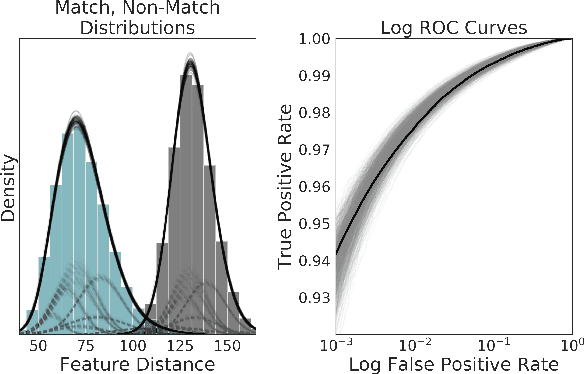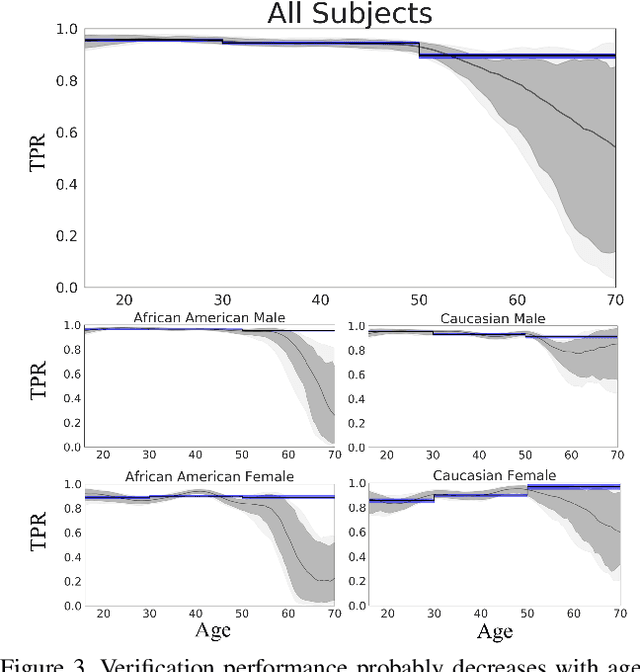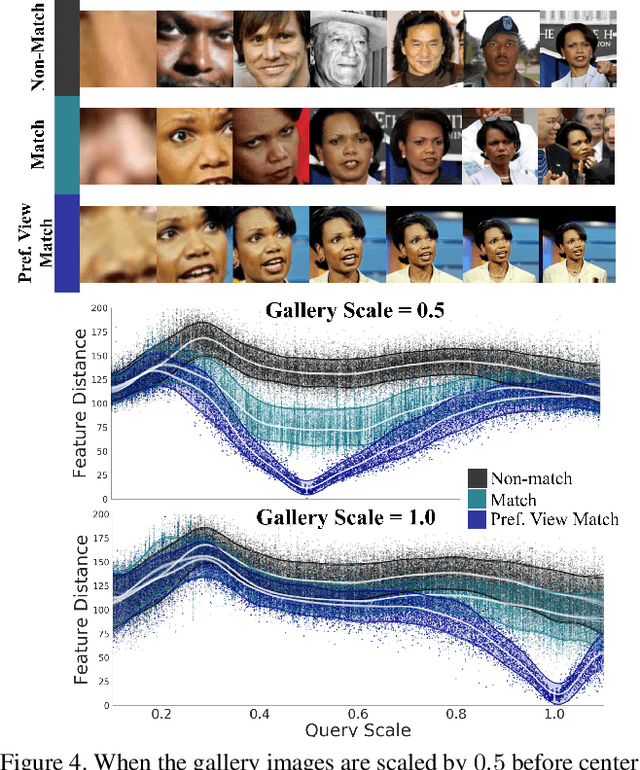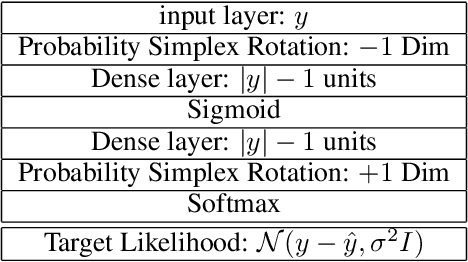Mel McCurrie
Perceptive Automata, Boston, USA
Modeling Score Distributions and Continuous Covariates: A Bayesian Approach
Sep 21, 2020



Abstract:Computer Vision practitioners must thoroughly understand their model's performance, but conditional evaluation is complex and error-prone. In biometric verification, model performance over continuous covariates---real-number attributes of images that affect performance---is particularly challenging to study. We develop a generative model of the match and non-match score distributions over continuous covariates and perform inference with modern Bayesian methods. We use mixture models to capture arbitrary distributions and local basis functions to capture non-linear, multivariate trends. Three experiments demonstrate the accuracy and effectiveness of our approach. First, we study the relationship between age and face verification performance and find previous methods may overstate performance and confidence. Second, we study preprocessing for CNNs and find a highly non-linear, multivariate surface of model performance. Our method is accurate and data efficient when evaluated against previous synthetic methods. Third, we demonstrate the novel application of our method to pedestrian tracking and calculate variable thresholds and expected performance while controlling for multiple covariates.
A Bayesian Evaluation Framework for Ground Truth-Free Visual Recognition Tasks
Jun 20, 2020



Abstract:An interesting development in automatic visual recognition has been the emergence of tasks where it is not possible to assign ground truth labels to images, yet still feasible to collect annotations that reflect human judgements about them. Such tasks include subjective visual attribute assignment and the labeling of ambiguous scenes. Machine learning-based predictors for these tasks rely on supervised training that models the behavior of the annotators, e.g., what would the average person's judgement be for an image? A key open question for this type of work, especially for applications where inconsistency with human behavior can lead to ethical lapses, is how to evaluate the uncertainty of trained predictors. Given that the real answer is unknowable, we are left with often noisy judgements from human annotators to work with. In order to account for the uncertainty that is present, we propose a relative Bayesian framework for evaluating predictors trained on such data. The framework specifies how to estimate a predictor's uncertainty due to the human labels by approximating a conditional distribution and producing a credible interval for the predictions and their measures of performance. The framework is successfully applied to four image classification tasks that use subjective human judgements: facial beauty assessment using the SCUT-FBP5500 dataset, social attribute assignment using data from TestMyBrain.org, apparent age estimation using data from the ChaLearn series of challenges, and ambiguous scene labeling using the LabelMe dataset.
Predicting First Impressions with Deep Learning
May 10, 2017



Abstract:Describable visual facial attributes are now commonplace in human biometrics and affective computing, with existing algorithms even reaching a sufficient point of maturity for placement into commercial products. These algorithms model objective facets of facial appearance, such as hair and eye color, expression, and aspects of the geometry of the face. A natural extension, which has not been studied to any great extent thus far, is the ability to model subjective attributes that are assigned to a face based purely on visual judgements. For instance, with just a glance, our first impression of a face may lead us to believe that a person is smart, worthy of our trust, and perhaps even our admiration - regardless of the underlying truth behind such attributes. Psychologists believe that these judgements are based on a variety of factors such as emotional states, personality traits, and other physiognomic cues. But work in this direction leads to an interesting question: how do we create models for problems where there is no ground truth, only measurable behavior? In this paper, we introduce a new convolutional neural network-based regression framework that allows us to train predictive models of crowd behavior for social attribute assignment. Over images from the AFLW face database, these models demonstrate strong correlations with human crowd ratings.
 Add to Chrome
Add to Chrome Add to Firefox
Add to Firefox Add to Edge
Add to Edge